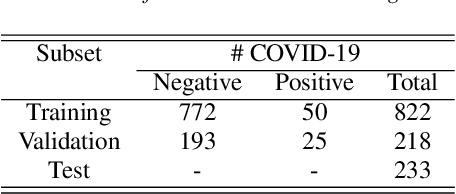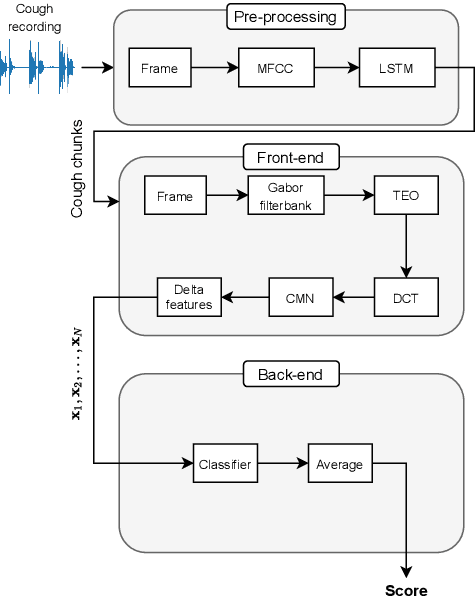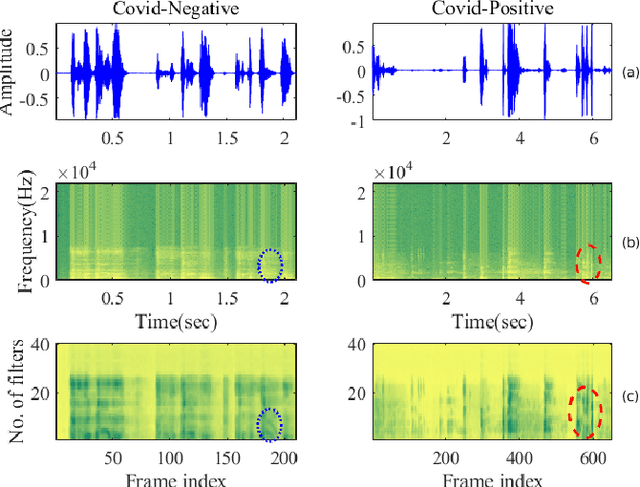Madhu R. Kamble
Exploring auditory acoustic features for the diagnosis of the Covid-19
Jan 22, 2022



Abstract:The current outbreak of a coronavirus, has quickly escalated to become a serious global problem that has now been declared a Public Health Emergency of International Concern by the World Health Organization. Infectious diseases know no borders, so when it comes to controlling outbreaks, timing is absolutely essential. It is so important to detect threats as early as possible, before they spread. After a first successful DiCOVA challenge, the organisers released second DiCOVA challenge with the aim of diagnosing COVID-19 through the use of breath, cough and speech audio samples. This work presents the details of the automatic system for COVID-19 detection using breath, cough and speech recordings. We developed different front-end auditory acoustic features along with a bidirectional Long Short-Term Memory (bi-LSTM) as classifier. The results are promising and have demonstrated the high complementary behaviour among the auditory acoustic features in the Breathing, Cough and Speech tracks giving an AUC of 86.60% on the test set.
PANACEA cough sound-based diagnosis of COVID-19 for the DiCOVA 2021 Challenge
Jun 07, 2021



Abstract:The COVID-19 pandemic has led to the saturation of public health services worldwide. In this scenario, the early diagnosis of SARS-Cov-2 infections can help to stop or slow the spread of the virus and to manage the demand upon health services. This is especially important when resources are also being stretched by heightened demand linked to other seasonal diseases, such as the flu. In this context, the organisers of the DiCOVA 2021 challenge have collected a database with the aim of diagnosing COVID-19 through the use of coughing audio samples. This work presents the details of the automatic system for COVID-19 detection from cough recordings presented by team PANACEA. This team consists of researchers from two European academic institutions and one company: EURECOM (France), University of Granada (Spain), and Biometric Vox S.L. (Spain). We developed several systems based on established signal processing and machine learning methods. Our best system employs a Teager energy operator cepstral coefficients (TECCs) based frontend and Light gradient boosting machine (LightGBM) backend. The AUC obtained by this system on the test set is 76.31% which corresponds to a 10% improvement over the official baseline.
 Add to Chrome
Add to Chrome Add to Firefox
Add to Firefox Add to Edge
Add to Edge